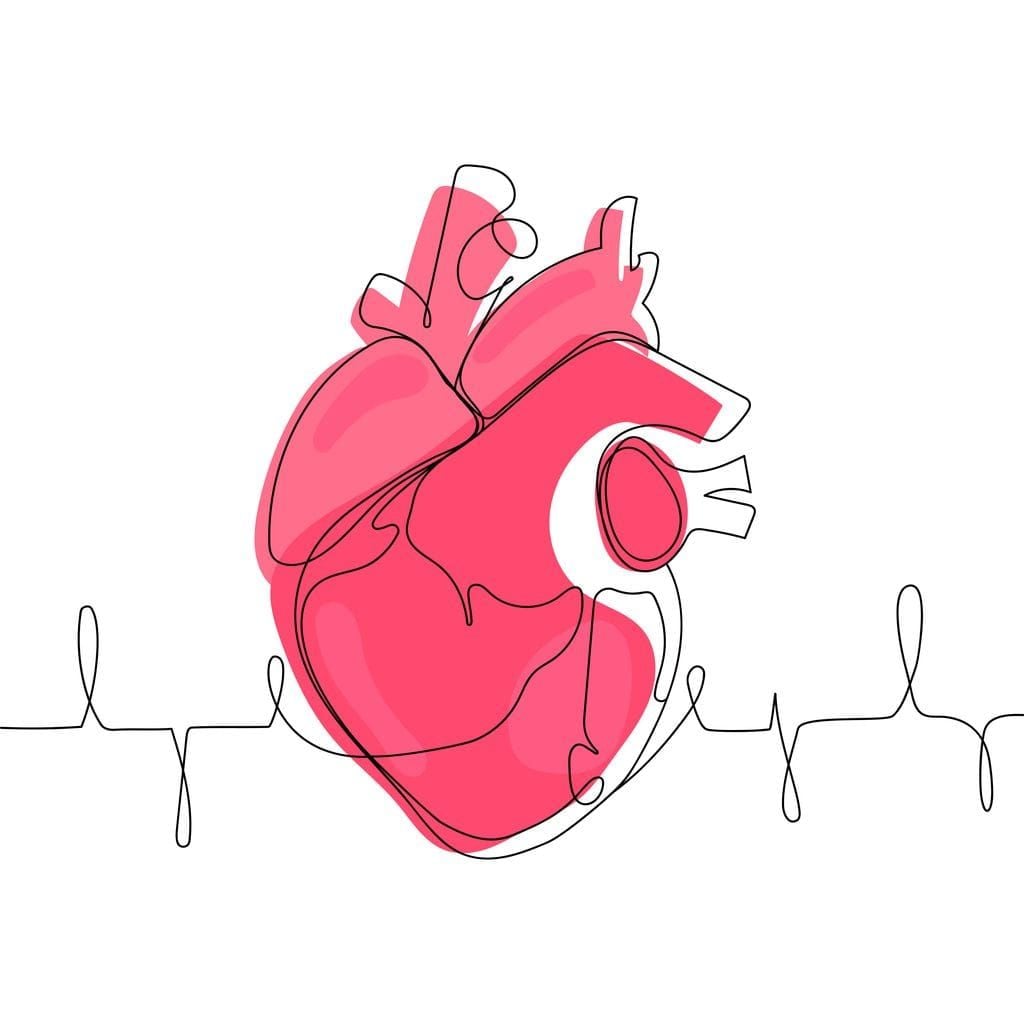The action of a single heart beat
)
When was your last anatomy lesson?
The heart is an extraordinary muscle that pumps blood throughout the body, delivering oxygen and nutrients while removing waste. This process happens through a series of rhythmic contractions and relaxations known as the cardiac cycle. Understanding how the heart beats in a single cycle can help you appreciate how this vital organ keeps you alive.
Phases of the cardiac cycle
The cardiac cycle consists of two main phases: systole and diastole. These terms might sound complicated, but they simply refer to the heart's pumping and relaxing actions.
Atrial systole (filling the ventricles): The heart has four chambers: two upper chambers called atria and two lower chambers called ventricles. The cycle starts with the atria, the smaller chambers, filling with blood. When the atria contract—a phase called atrial systole—they push blood into the ventricles. Think of this as filling up a pair of water balloons with just the right amount of water.
Ventricular systole (pumping blood out): After the ventricles are filled, they need to pump the blood out to the lungs and the rest of the body. This happens in the next phase, called ventricular systole. The ventricles contract, squeezing the blood out with force. The right ventricle sends blood to the lungs to pick up oxygen, while the left ventricle pumps oxygen-rich blood to the rest of your body. Imagine squeezing a balloon filled with water—the water shoots out forcefully, just like blood does from the heart.
Diastole (relaxation and filling up again): Once the blood is pumped out, the heart needs a brief moment to relax and reset. This is the diastolic phase. During this time, the ventricles relax and start filling up with blood again as it flows in from the atria. The heart is like a sponge at this stage, absorbing blood to get ready for the next beat.
Electrical signals and heartbeat coordination
The heartbeat is not just a random squeeze; it’s a carefully timed process. The heart has its own built-in electrical system that keeps everything on track. It starts with the sinoatrial (SA) node, also known as the heart’s natural pacemaker, located in the right atrium. The SA node sends out an electrical signal that tells the atria to contract and push blood into the ventricles.
Next, the signal reaches the atrioventricular (AV) node, which acts like a relay station. The AV node pauses the signal just long enough to make sure the atria have finished their job before passing the signal on to the ventricles. This delay is crucial because it ensures that the ventricles are fully loaded with blood before they start to contract.
The electrical signal then moves down special pathways in the heart, making the ventricles contract and pump blood out. Once the ventricles have done their job, the heart relaxes, and the cycle starts all over again.
The rhythm of life
This entire process—filling, pumping, relaxing—happens in less than a second, with your heart beating around 60 to 100 times per minute at rest. It’s a continuous, never-ending cycle that keeps you alive every moment of every day.
In summary, the heart’s ability to beat and keep blood flowing throughout your body is a marvel of nature. From the initial filling of the ventricles to the powerful push of blood to your lungs and body, each phase of the cardiac cycle plays a vital role in maintaining your health. It’s a process that happens so automatically that you don’t even notice it!
---
Video animation
Here is a terrific video animation of the cardiac cycle. Simple and easy to understand, it shows the sequence of events in a single heart beat: The Cardiac Cycle
The video very clearly shows the major blood vessels (both arteries and veins) that shunt blood into or out of the heart chambers (i.e., the two atria and two ventricles).
Notice how important the heart valves are within the process. These include the tricuspid valve, pulmonary valve, mitral valve, and aortic valve. Their proper opening and closure during the heart's relaxation and contraction phases prevents blood flowing the wrong way back into the heart chambers. In short, the heart valves play a very important role in the effective filling and emptying of the heart chambers during each and every heart beat.
The heart is a pretty important organ. Try to keep yours finely tuned, it has a lot of reps to get through in a day!
---
References
Bailey, R. (2023, Apr 5). The Cardiac Cycle. ThoughtCo. thoughtco.com/phases-of-the-cardiac-cycle-anatomy-373240.
Pollock JD & Makaryus AN. (updated 2022 Oct 3). Physiology, Cardiac Cycle. In: StatPearls [Internet]. Treasure Island (FL): StatPearls Publishing; 2024 Jan-. Available from: https://www.ncbi.nlm.nih.gov/books/NBK459327/
Science Direct. Cardiac cycle. https://www.sciencedirect.com/topics/neuroscience/cardiac-cycle#chapters-articles
---
First published in 2016. Updated in June 2024.
| Tags:Heart 101: The basicsHeart Health for AthletesHH4A |

)